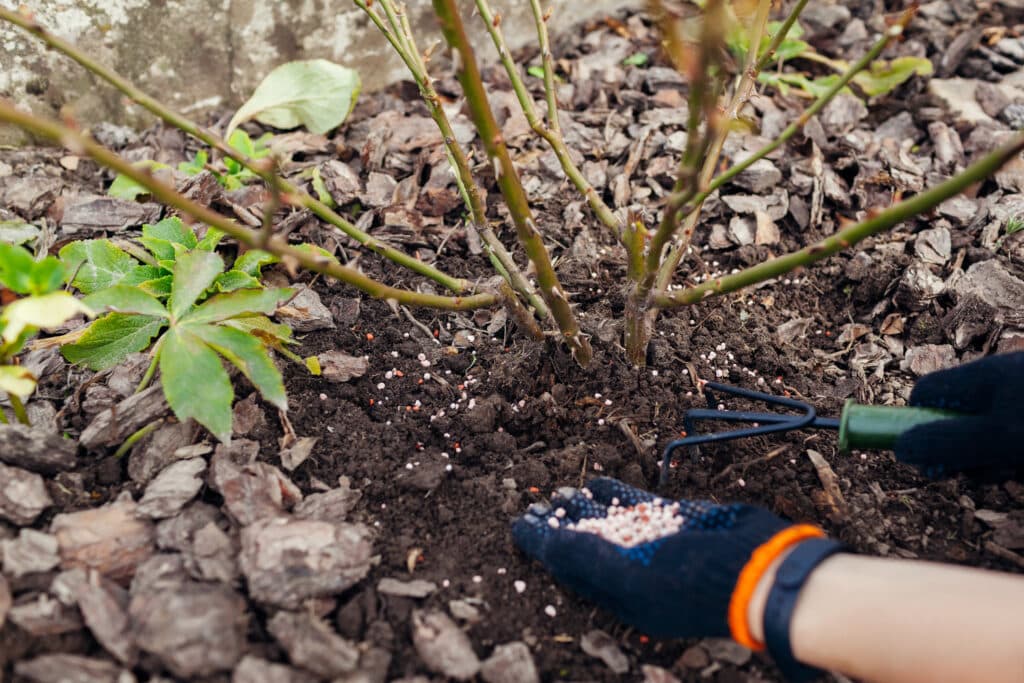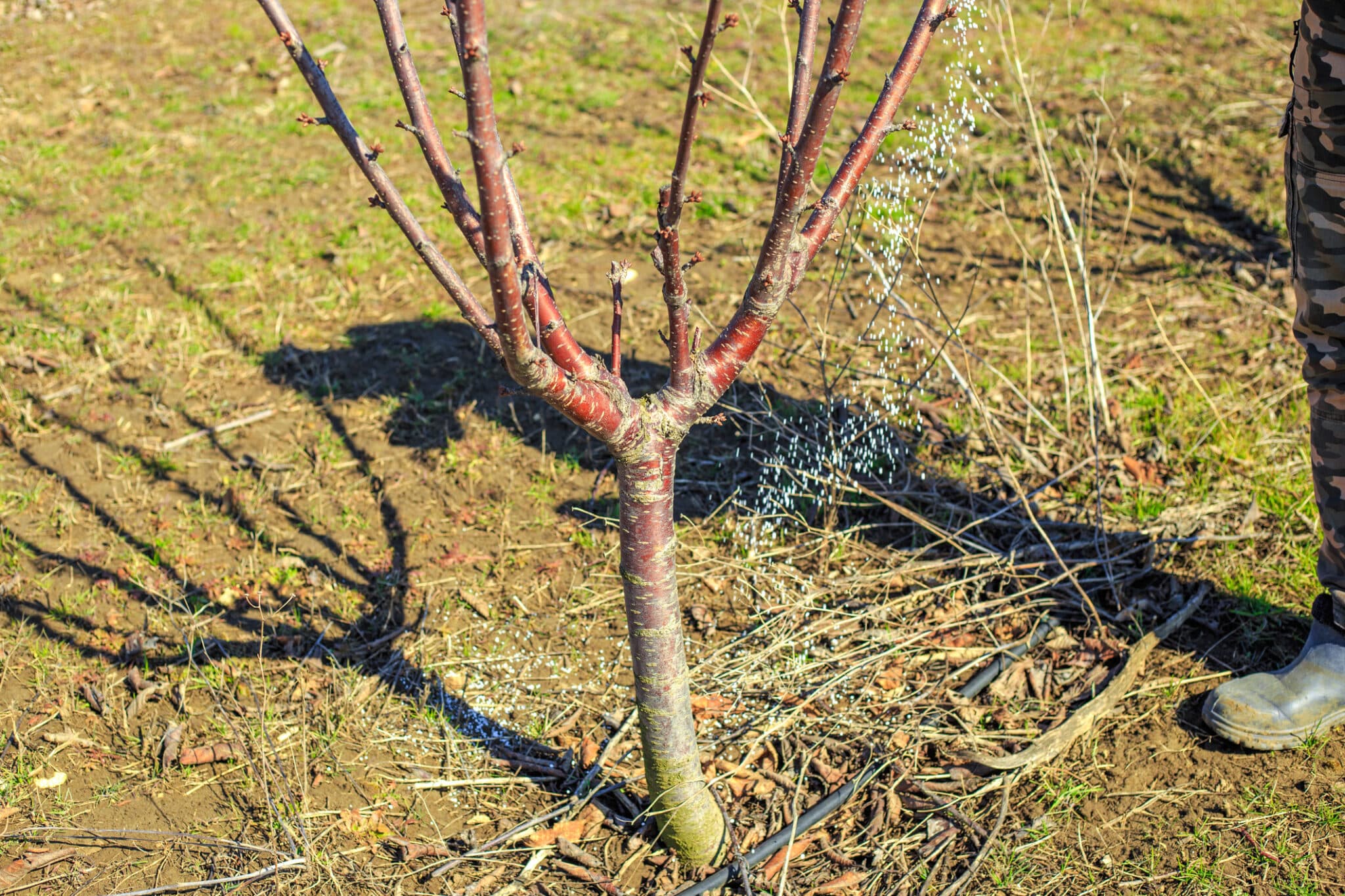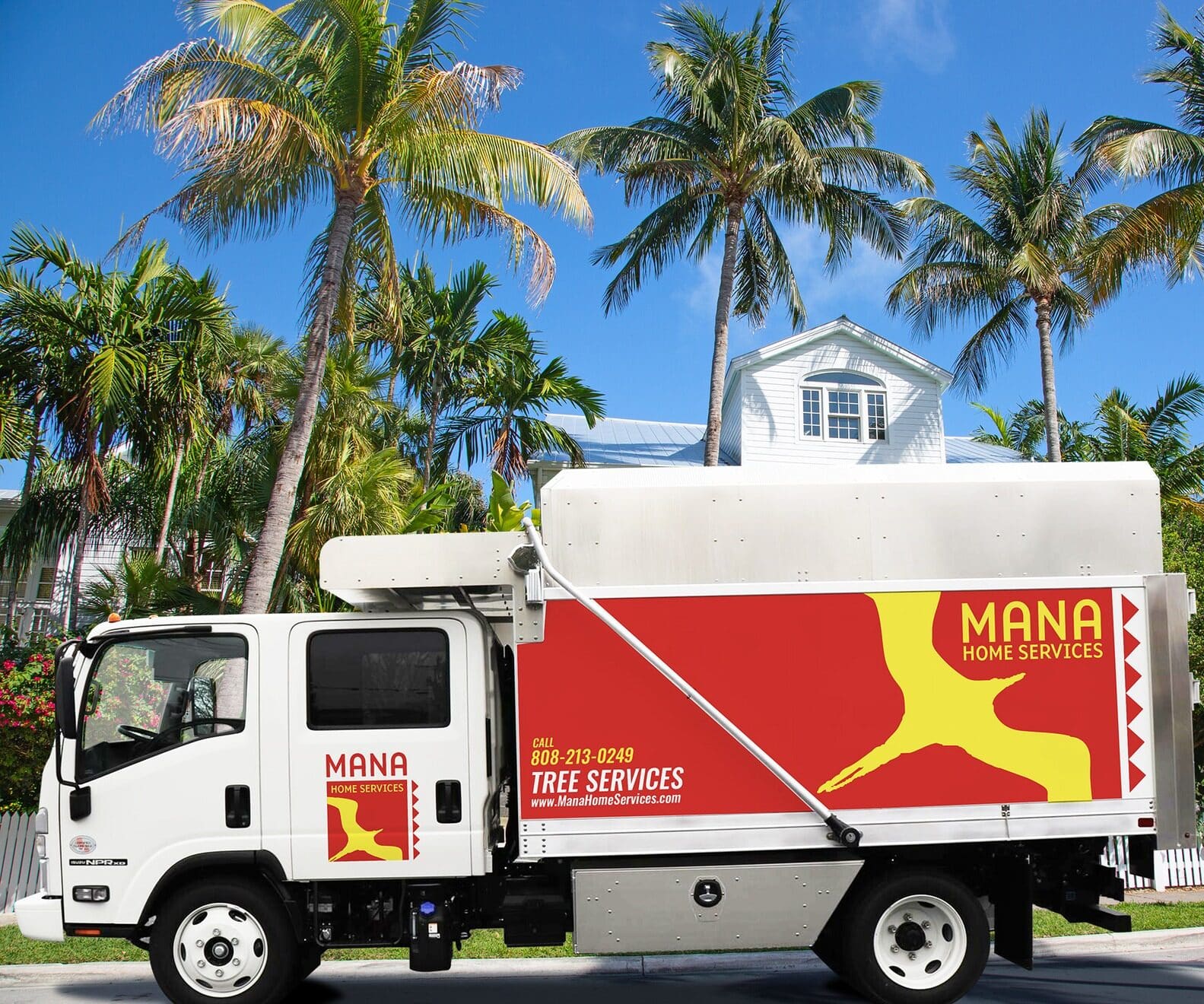Fertilize trees – Keeping your trees healthy starts from the ground up, literally. Fertilizing them with the right nutrients at the right time gives them the strength to grow deep roots and lush, vibrant canopies. In Kahala and Mililani, where tropical conditions can quickly strip soil of vital minerals, a smart fertilization routine is not just helpful, it is essential. With the right care, your landscape can thrive year-round, adding beauty and value to your property.
Understanding Tree Fertilization
Fertilize trees in spring to boost health and encourage lush, vibrant growth in Kahala and Mililani landscapes. Trees rely on soil nutrients for energy, strength, and overall vitality during their growing season. Without proper fertilization, they may struggle to resist disease, pests, and environmental stress. Fertilizers supplement nutrient-poor soil, helping trees thrive in urban or residential settings.
The process starts with understanding what trees need at different life stages and seasonal cycles. Nitrogen, phosphorus, and potassium support leaf development, root growth, and resistance to stress. When soil lacks these nutrients, trees may show stunted growth, discolored leaves, or poor canopy density. Spring fertilizing helps them recover from winter dormancy and prepares them for Hawaii’s warm, active season.
In places like Kahala and Mililani, fertilizing trees also improves resistance to tropical pests and high humidity stress. Warm climates accelerate growth, so trees need extra nutrients to keep up with the fast pace. Fertilizers tailored to local conditions ensure they receive balanced nutrition all season long. A well-fed tree looks fuller, lives longer, and performs better in every way.
Ultimately, when you fertilize trees thoughtfully, you are investing in the long-term beauty and health of your outdoor space. Healthy trees enhance curb appeal, provide shade, and boost property value. Trusting seasonal rhythms and soil needs helps ensure each tree reaches its full potential. For residents in Kahala and Mililani, that care starts with timely, effective fertilization.
Fertilize Trees Right Timing Tips That Work
Fertilize trees in early spring when new growth begins, giving them essential nutrients after winter dormancy. This timing supports leaf, root, and branch development at the start of the growing season. Trees absorb nutrients efficiently during this phase, setting them up for a healthy year.
In Kahala and Mililani, spring’s mild weather makes nutrient uptake especially effective.
Fertilizing in late fall helps trees replenish nutrients lost during their summer growth spurt.
Nutrients stored in roots during fall promote faster recovery and stronger spring performance. Cooler weather also reduces the chance of fertilizer burn or water stress. This approach keeps trees nourished while minimizing risks during Hawaii’s warm climate cycles.
Summer heat in Kahala and Mililani can reduce nutrient absorption and increase stress on trees. Fertilizer applied during dry spells may burn roots and disrupt natural growth rhythms. Focus on hydration and mulching in the summer to maintain overall health.
Wait for cooler temperatures to resume fertilization safely and effectively.
Follow nature’s lead by fertilizing when trees are most receptive, early spring and late fall. Aligning care with seasonal cycles ensures healthier roots, better growth, and long-term vitality. Well-timed fertilizer keeps trees vibrant without overloading them. Understanding when to fertilize trees helps maximize results and preserve landscape beauty.
Soil Considerations in Kahala and Mililani
Fertilize trees effectively by first understanding the soil beneath them, especially in unique regions like Kahala and Mililani. Soil composition in these areas can range from sandy and porous to clay-heavy, depending on elevation and proximity to the coast. These differences impact on how well soil holds nutrients and water. Without testing, it is hard to know what your trees truly need.
A professional soil test identifies pH levels, nutrient deficiencies, and the presence of essential minerals like nitrogen, phosphorus, and potassium. This insight helps you choose fertilizers that match your soil’s current state. Over-fertilizing without knowing your soil’s makeup can waste resources and harm tree health. Testing allows you to fertilize trees accurately, improving both short- and long-term results.
In Kahala, sandy soil may drain too quickly, washing nutrients away before trees absorb them. In contrast, Mililani’s soils tend to be more structured, potentially holding onto nutrients longer but needing aeration. Adjusting fertilization methods for each location ensures trees get the right support. Local expertise or test kits can help you interpret your soil’s unique profile.
Tailoring your approach based on soil type helps your trees thrive through every season. It avoids nutrient imbalances and promotes deep, healthy root systems. When you fertilize trees based on actual soil data, the results are visible and lasting. In both Kahala and Mililani, smarter soil care leads to stronger trees.
Choosing the Right Fertilizer
To fertilize trees correctly, you need to match the product to your tree’s needs and your soil’s condition. Not all fertilizers are created equal, and using the wrong type can do more harm than good. A balanced fertilizer supports tree growth by supplying the three primary nutrients: nitrogen, phosphorus, and potassium. These nutrients are vital for healthy leaves, strong roots, and disease resistance.
Fertilizers labeled with an NPK ratio, such as 16-4-8, show the percentage of each nutrient in the mix. Higher nitrogen content encourages lush, green canopy growth, which is especially helpful in early spring. In Kahala and Mililani, where trees grow quickly in the tropical climate, nitrogen-rich blends are often a smart choice. Phosphorus aids in root development, while potassium boosts stress tolerance and overall hardiness.
Slow-release fertilizers offer steady feeding over time, reducing the risk of overloading the tree. They are ideal for warm climates, where frequent watering could otherwise flush nutrients too quickly from the soil. This method also minimizes labor, making it easier to keep up with seasonal fertilizing schedules. It is a set-it-and-forget-it solution that still delivers solid results.
When choosing fertilizer, always consider tree species, growth stage, and local soil conditions. Your fertilizing plan should be as unique as your landscape. With the right formula, trees in Kahala and Mililani grow stronger and live longer. Fertilize trees wisely, and you will see the benefits in every leaf.
Application Methods to Fertilize Trees
To fertilize trees effectively, the method matters just as much as the product. How and where you apply fertilizer determines how well trees absorb nutrients. Poor application can lead to waste, runoff, or even root damage. When done right, proper application promotes stronger, more consistent growth throughout the season.
For mature trees, always spread fertilizer evenly over the root zone, which extends well beyond the drip line. Avoid concentrating fertilizer near the trunk, where it can burn the bark or stress the roots. Water the area thoroughly after applying to help nutrients soak deep into the soil. This also prevents surface runoff, ensuring your trees get the most benefit.
In Kahala and Mililani, tropical rain and warm temperatures impact how nutrients move through the soil. Timing fertilizer applications before a steady rain or light watering session improves absorption. Applying it when soil is already moist also reduces the risk of nutrient loss. Local conditions should always guide your application strategy for best results.
Using tools like spreaders or root feeders can improve accuracy and consistency. These methods help deliver nutrients directly to active root zones without disturbing the soil. Fertilize trees with the right technique, and you will see healthier canopies and more resilient roots. A few simple steps make a big difference in tree vitality.
Fertilizing Young vs. Mature Trees
Fertilizing Young Trees
Fertilize trees only after their first year to avoid damaging delicate, developing roots. Newly planted trees need time to settle into the soil before receiving extra nutrients. Premature fertilization may stress young roots and stunt long-term growth. Let the tree establish naturally before introducing supplemental feeding.
After the first year, begin fertilizing in early spring to promote root and canopy development. Use a nitrogen-rich blend to boost leaf production and structural growth. Consistent fertilizing helps young trees grow faster and healthier. Monitor progress and adjust feeding based on visual growth and soil response.
Fertilizer strengthens young trees against stress, pests, and environmental challenges. Deep, well-fed roots help young trees anchor and absorb water more efficiently. Avoid over-fertilizing, which can lead to weak limbs and excess foliage. Balanced feeding builds a strong foundation for the years ahead.
Kahala and Mililani’s warm climate supports year-round growth, making spring fertilization crucial. Young trees grow quickly here but still need careful, measured nutrition. Fertilize trees with the region’s weather and soil conditions in mind. Local adaptation ensures trees grow strong from the start.
Fertilizing Mature Trees
Mature trees often thrive without frequent fertilization if soil nutrients are sufficient. Watch for yellowing leaves, slow growth, or sparse canopies as signs of deficiency. Apply fertilizer only when visual cues or soil tests indicate it is necessary. Too much fertilizer can lead to weak limbs or stress from rapid growth.
Older trees benefit from slow-release fertilizers that support steady nutrient uptake. Avoid using fast-acting products that might shock mature systems. Trees with deeper roots already access more natural nutrients underground. Feed sparingly to supplement, not replace, what the environment provides.
Trees in Mililani may hold nutrients longer due to denser soils, needing less frequent fertilization. In Kahala, sandy soils might require occasional nutrient boosts for deeper absorption. Local conditions should guide how often and how much you fertilize. Customize feeding schedules to reflect the specific environment and tree species.
Fertilize trees to maintain health, not force growth, especially in mature landscapes. Overfeeding can lead to fast but weak structural development in large trees. Apply lightly and monitor changes throughout the season. Mature trees thrive when care is slow, steady, and strategic.
Recognizing Signs of Nutrient Deficiency
To fertilize trees effectively, you must first know when they are lacking key nutrients. Trees communicate their needs through subtle but visible symptoms, especially during their active growing months. Yellowing leaves, also known as chlorosis, often signal a nitrogen deficiency. When you spot discolored or thinning foliage, it is time to investigate and act.
Stunted growth is another common red flag. If your tree is not producing new shoots or the canopy looks sparse, it may be short on essential nutrients. Phosphorus helps drive root development and energy transfer, while potassium strengthens stems and improves disease resistance. Without these nutrients, trees can appear weak or underdeveloped, even in otherwise healthy landscapes.
Premature leaf drop or browning leaf tips can also indicate stress caused by poor soil nutrition. These signs often show up in summer or late spring, especially in regions like Kahala and Mililani. Local weather may intensify these symptoms, making timely fertilization even more important. Consistent monitoring helps you catch issues before they become severe.
To maintain healthy trees, observe regularly, especially during seasonal transitions. Look for patterns across different trees and check the soil moisture, too. If multiple symptoms appear, a soil test can confirm nutrient deficiencies and guide correction. Fertilize trees only when needed, and you will restore vitality without overdoing it.
Environmental Factors Affecting Fertilization
To fertilize trees effectively in Hawaii, you need to work with, not against, the local environment. Climate plays a major role in how nutrients move through soil and into the tree’s root system. In regions like Kahala and Mililani, warm temperatures, high humidity, and frequent rain all affect fertilization timing and method. Ignoring these factors can reduce the impact of your efforts.
Heavy rainfall, common in Mililani, can wash away fertilizers before trees absorb them. Applying fertilizer right before or during a storm often leads to nutrient runoff and wasted product. In contrast, light rain after application helps carry nutrients deeper into the soil. Watch the weather closely and fertilize trees during calm, predictable conditions for best results.
In coastal Kahala, sandy soil combined with wind and salt exposure require careful planning. Sandy soil drains quickly, making nutrients harder to retain. Split applications, smaller doses more frequently, work better in these fast-draining environments. This approach prevents nutrient loss and reduces the risk of overfeeding.
Temperature also affects how trees absorb nutrients. In cooler months or mild spring days, roots are more active and ready to take in what they need. Fertilize trees during these optimal windows to ensure the nutrients get where they belong. By aligning your routine with the climate, you will boost tree health year-round.
Safety Considerations
Fertilizing trees improves their health but overdoing it can cause serious damage. Too much fertilizer can lead to chemical burns, weak growth, or even root death. Excess nutrients may also leach into nearby water systems, harming the environment. Responsible fertilizing is key to keeping both your trees and your landscape safe.
Start by following the recommended application rates listed on your fertilizer packaging. These guidelines are based on years of testing and help avoid nutrient overload. Applying more than needed does not speed up growth, it usually creates stress. Especially in places like Kahala and Mililani, where soil and climate already support fast-growing trees, restraint is important.
Timing also plays a big role in fertilizing safely. Do not apply fertilizer just before heavy rainfall or during extreme heat, as both can limit absorption and increase runoff risk. Instead, aim for calm, mild weather with slightly moist soil for best uptake. Planning your applications with care protects the tree and the surrounding environment.
Finally, store fertilizers in a cool, dry space, away from direct sunlight and moisture. Always seal containers tightly to prevent contamination or accidental spills. Wear gloves and follow safety instructions while applying. When you fertilize trees with caution and care, you protect your landscape, your home, and your island’s natural beauty.
Consulting Professionals
When in doubt, it is always smart to consult with local experts like Mana Home Services before you fertilize trees in Kahala or Mililani. Our team understands the unique climate, soil, and plant life that shape tree health across Hawaii. They offer personalized recommendations that help avoid over-fertilization, nutrient waste, and unnecessary treatments. Relying on professionals ensures you are supporting your trees the right way.
Mana Home Services provides valuable insights backed by experience and knowledge of native and tropical tree species. Whether you are dealing with yellowing leaves, sparse canopies, or slow growth, they will help diagnose the issue accurately. Our local know-how gives you access to advanced testing and proven fertilization strategies. This tailored support gives your landscape the best chance to thrive year-round.
With Hawaii’s diverse microclimates, fertilization needs can vary greatly, even between Kahala and Mililani. That is why professional input matters. Mana Home Services considers weather patterns, rainfall, soil texture, and even neighborhood pest activity when creating a fertilization plan. Our customized approach delivers targeted, long-lasting results.
Fertilize trees confidently by partnering with experienced professionals who know your landscape. Mana Home Services helps you protect your investment and enjoy healthier, more vibrant trees. When your trees grow better, your entire property benefits. Trust our local experts to get it right the first time.
FAQs About Fertilize Trees
Why Is It Important to Fertilize Trees in Kahala and Mililani?
Fertilizing trees in Kahala and Mililani is important because it replenishes nutrients lost in Hawaii’s tropical soil. It helps trees grow stronger, resist pests, and stay healthy despite coastal conditions in Kahala or cooler elevations in Mililani. Regular fertilization keeps landscapes vibrant and supports long-term tree health.
When is the best time to fertilize trees in these areas?
The best time is late winter to early spring, right before the growing season kicks off. That timing ensures trees absorb nutrients when they need them most. However, because Hawaii’s climate is mild year-round, certain trees can benefit from fertilizing at other times too. Always consider species and local conditions.
What type of fertilizer should be used for trees in Kahala and Mililani?
Slow-release, balanced fertilizers are typically recommended. They provide a steady flow of nutrients without overwhelming the soil. A soil test helps pinpoint what nutrients your trees actually need. Local professionals can offer guidance for the best mix.
Can over-fertilization harm trees?
Yes, overdoing it can cause weak, excessive growth and increase the risk of pests or disease. It can also lead to runoff that harms nearby ecosystems. Always follow application instructions carefully. When in doubt, ask a local arborist.
Are local fertilization services available in Kahala and Mililani?
Absolutely! At Mana Home Services, we offer fertilization and complete Tree Care Services. We can assess your soil and tree health before treatment. Our local knowledge ensures the most effective, eco-conscious care.



